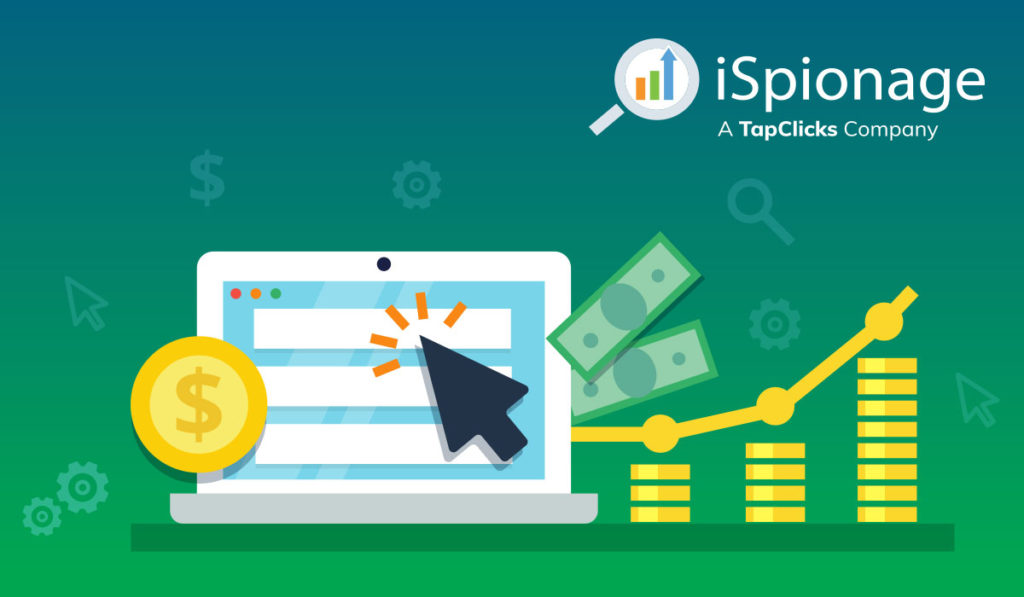
If you’re spending money on Paid Search Ads (PPC), you probably spend a considerable amount of time checking your conversion rate. After all, what’s the point of buying Google ads if it doesn’t convert into paying customers?
Thankfully, there are several ways to optimize your PPC campaigns, get a higher Quality Score in Google, and improve your landing page conversion rate. In this article, we explain how Google defines Quality Score and areas where you should focus to improve your low quality score, which will lead to more conversions. Then, we’ll show you how to utilize SEM competitive insights to fine-tune your strategy.
What is a Quality Score and why it matters?
A Quality Score is Google’s way of rating the quality and relevancy of the keywords, landing pages, and PPC ads. The Quality Score is on a 1-10 scale, with one being the lowest Quality Score and ten being the highest. The higher your Google Ads Quality Score, the less you will pay for cost per click (CPC) advertisements, and the higher Google will rank your ads, which leads to more clicks and more conversions at a lower CPA.
Google bases the Quality Score off of the following:
- Expected click-through rate (CTR) – How likely someone is to click on your ad when searching for the keyword in your ads.
- Ad relevance – How your ad copy is relevant to the keywords in your ad group.
- Landing page experience – How relevant and helpful your website’s landing page is to users who click on your ad.
Follow the guidelines in Google’s Quality Score best practices guide to help improve your PPC performance.
What’s a good PPC conversion rate?
According to Wordstream, the average conversion rate across Google Ads is 4.40% on the search network and 0.57% on the display network. Paid search conversion rates can vary depending on your industry, and below, you’ll find benchmarks for the average conversion rate in Google ads across 20 common industries.
How to improve a low Quality Score and increase PPC conversion rate?
It can be frustrating to generate a low Quality Score and PPC conversion rates after pouring money into your paid search campaigns. Thankfully, there are several ways to avoid that, including tips that can be implemented to improve your Quality Score and boost conversion rates. Some of those topics include how to:
- Align Ad Copy with Landing Pages
- Write strong PPC headlines.
- Include a clear call to action
- Create custom landing pages for each segment
- Monitor your competitors.
Step #1: Align ad copy with landing pages
Internet users tend to gravitate more toward organic search results than PPC ads. To capture their attention, your PPC ads need to clearly articulate the product they’re searching for or the exact pain points they’re trying to solve.
When users click on the ad, they expect to find a matching offer (free trial, discount, etc.) on the landing page. If visitors see a disconnect between the ad copy and landing page and do not feel they are getting what they were promised, they are more likely to leave the page. For this reason, it’s important to use the same or similar keywords in your ads and landing pages to help guide the user.
As we can see in the example below, Box.com used the keyword “File Sharing” in their PPC headline, ad copy, and landing page to keep their messaging consistent and relevant. This is the level of consistency we recommend using when creating content for Google ads to help the user know that the landing page has the exact information they’re searching for:
Box.com understands the importance of having a strong Quality Score and follows all the best practices to maximize their conversions. As a result, their ads ranked #4 in Google SERP. (Source: iSpionage.com)
PRO TIP: Study your top competitors’ conversion strategy and conduct A/B testing to see which ads and landing pages deliver better results.
When aligning ad copy with a landing page, conduct thorough keyword research to ensure you are using your ads’ proper description. Understanding the keywords your target customer uses will help you understand their buying cycle, which will, in turn, help you generate more clicks to your ads.
While it may seem easy to guess the keywords customers most likely use, it is worthwhile to take a few minutes to conduct your research using a keyword research tool like iSpionage, or Raven Tools.
Gather customer journey insights for your competition using the iSpionage Competitor Research tool. Try it Free
Step #2: Write Strong PPC headlines
Your ad copy won’t get read if its headline isn’t engaging enough to encourage people to click on it. It’s imperative to your campaign to write compelling headlines that capture your audiences’ attention using highly relevant keywords. Good headlines will boost your Click-Through-Rates (CTR) and lead you to high Quality Scores. Effective strategies to engage users including:
Using a question in your PPC headlines
Users tend to search for questions frequently in Google, so including a question directly in your ad is an effective way to capture a users’ attention. Here’s a perfect example of an ad using a question that spawns an emotion, then drives interest:
Describe how you’re better than your competitor
If you’re bidding on competitor’s branded keywords, show how your product compares to your competitors. Describing why you’re better than your competitors will help your audience have a clear understanding of how your product benefits.
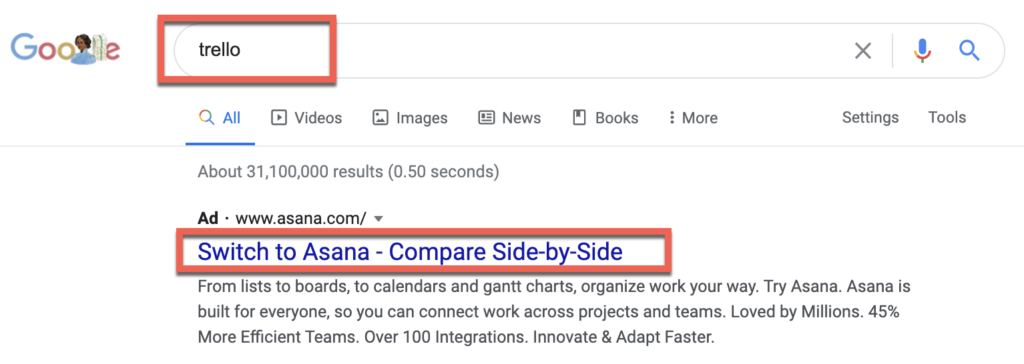
Include numbers, statistics, or a well-known slogan
Be clear with your offer – if you’re offering 50% off, then say it! Likewise, if you know certain stats that stand out among your target audience, including them in your ads has shown to be an effective way to increase Click Through Rate (CTR). Geico’s popular tagline, “15 minutes could save you 15% or more on car insurance,” being used in their ads is a shining example of this:
PRO TIP: Google allows 90 characters for PPC headlines, so try to maximize every inch of valuable space.
Step #3: Include a clear call-to-action
A clear call to action (CTA) tells the user exactly what they need to do to purchase your product or learn more about your company. Phrases like “Add to Cart,” or “Click here for a free trial,” and “Sign up here” help guide the user journey and incentivize them to click on the landing page. Try to make the CTA as clear and enticing as possible, as the more exciting and engaging it is, the more likely users are to visit your landing page. Try to limit using CTAs such as “Buy now” and “Learn more,” as both tend to be overused and aren’t always attractive to a user.
Tuft & Needle makes the call to action on their landing page stand out in a great way by making the “Add to Cart” buttons bright green and placing them at the center of the page:
Jaguar also has an easy-to-find call to action with a red “Explore this Vehicle” button:
When looking for ideas on strong CTAs, look no further than at what your competitors are using in their landing pages. Using the ‘‘Landing pages’ tab in iSpionage’s Competitor Research tool, you can see different types of Call-to-Action other companies are using to attract their website visitors to click to purchase or schedule a demo.
Seeing a competitor’s landing page can lift the curtains on their conversion strategy. It may be curiosity that motivates you to monitor competitor landing pages, but the power actually lies in gauging effectiveness and understanding why they work for your competitors. Learn how to See Competitor Landing Pages and Find Out What Works for SEO & PPC.
Step #4: Create custom PPC landing pages for each segment
If you are running several ads for different products or services your company offers, you need to create customized landing pages for each specific ad offering. Doing so helps the user know that the landing page they are visiting has the exact information they need. Additionally, a poor landing page experience can hurt your Quality Score.
If you want to get the most out of your PPC ads, your ad should always direct your visitor to a standalone landing page you intend to use in a paid campaign on Google Ads or Bing Ads. The content on your homepage often doesn’t match your ads’ content and the call to action customized to your initial ad campaign.
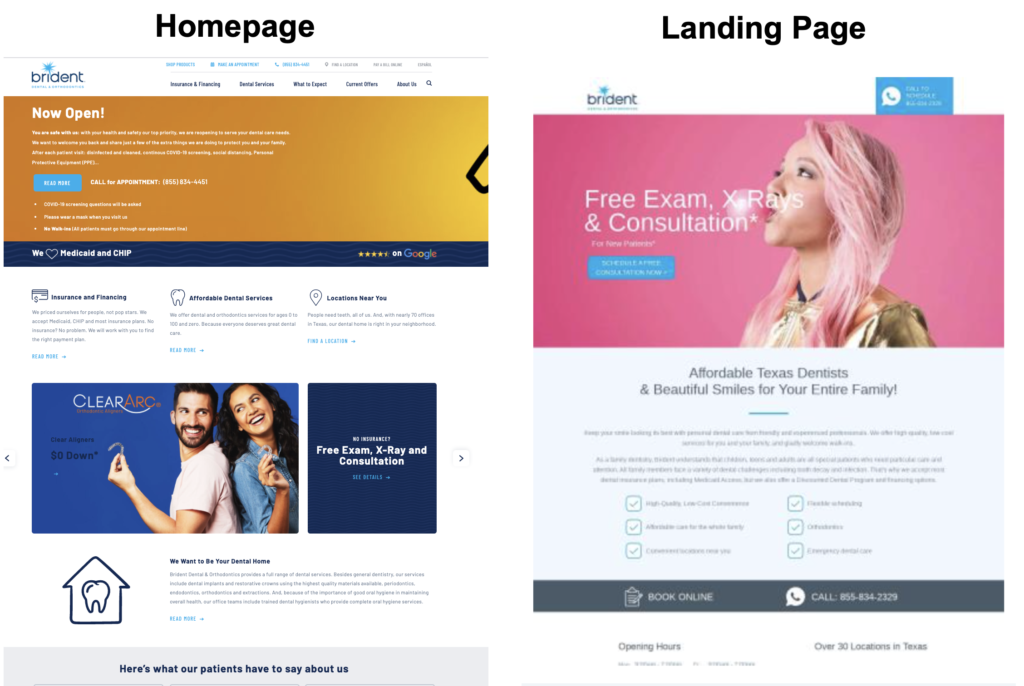
The goal of your ad is to get a user to a PPC landing page so you can get a visitor to take action, click on the CTA button to purchase a product, or set-up an appointment. Paid traffic pointed to generic web pages like a homepage just doesn’t convert well and can increase cost-per-click.
With a custom PPC landing page, we can direct visitors from an ad to a highly relevant landing page to show the information as promised on the ad then proceed to hit on the CTA button. The smooth user experience will help improve your quality score and drive your cost-per-click down and increase your PPC conversions.
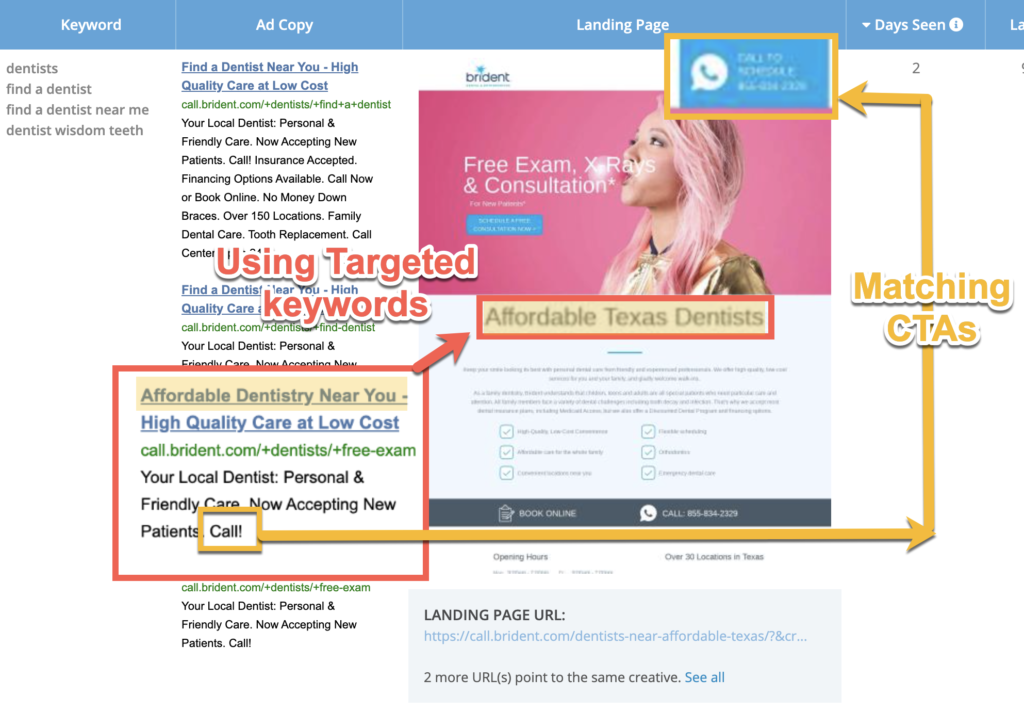
Learn how to analyze competitor landing pages and How To Get Pre-Tested Conversion Strategies in Minutes.
Step #5: Monitor your competitors
The more information you have about their advertising strategy, the more likely you are to build a better strategy and increase your PPC conversions.
Monitoring your competitors helps you to:
1. Learn to build better headlines and landing pages from their A/B testings and avoid their mistakes.
Monitoring your competitors’ A/B testing experiments and seeing which ad copy and headline works best for them will save you time determining which headline works best in your industry.
Fremont Bank ran two ads with different headlines: “No closing cost loan programs – Purchase Loan Rates” vs. “No closing costs loan programs – Home mortgage.” The ads with headlines including CTA “Purchase Loan Rates,” ran longer than the previous ads, we can infer that it won the A/B test.
2. Craft a unique offer that none of your competitors have.
To outperform your competitors’ offers, you must determine what type of promotion they’re currently running. The last thing you want to do is clicking on your competitor’s PPC ads to take a peek on their landing pages and deplete their PPC budget. iSpionage Campaign Monitoring tool has the capabilities of capturing your competitor’s landing pages and send an alert to your inbox when your competitors make changes in their landing pages. Essentially, you get to see the promotional offers behind their PPC ads without clicking on their ads.
In this example, Aspendental.com is offering dentures starting at $399,, and Brident.com is offering Free Exam, Xrays, and Consultations. If your company is trying to attract new patients, the Free Exam offer seems to be more attractive than discounted dentures. If Brident.com is your competitor, you may want to create a different or better offer, perhaps a Free Exam offers and a $10 Target Gift Card. Knowing your competitors’ different offers will help you build a unique offer your web visitors cannot resist, and bring you more leads.
3. Learn how your competitors build their conversion strategies and improve your conversions.
Monitoring your competitors enables you to gain insights into their strategies and get new ideas of variety ad copy and landing pages you can test. Conducting A/B testings will help you determine which ads or landing pages perform best to maximize your PPC conversions.
Key takeaways
The key to any PPC conversion optimization strategy begins with understanding the techniques your competitors are implementing so that you can make your PPC headlines, ad copy, and landing pages even stronger.
- Utilize the insights about your competitors’ PPC strategy to create fully optimized Google ads will help increase your Quality Score and improve your PPC conversion rate.
- Use a competitive intelligence tool to obtain those key insights, find other competitors or keywords you may not have known about previously.
- Always be testings on your Ad copy and landing pages to find which Headline, CTA, and landing pages work best for your audience and maximize your PPC conversions.
Sign up for a free iSpionage account to see competitor ads, keywords, and landing pages. Receive 10 free competitor reports and 3 complimentary competitor alerts per day.
Our A/B test monitoring is available via paid subscription, and with our 30-day money-back guarantee, you can try it without risk.
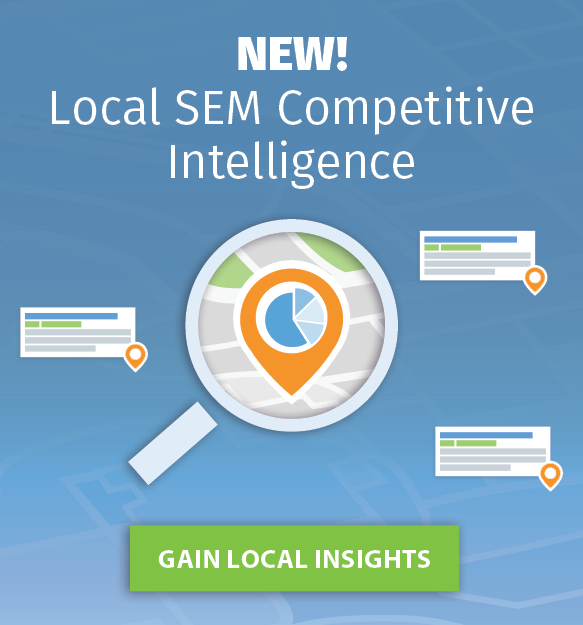










Comments are closed.